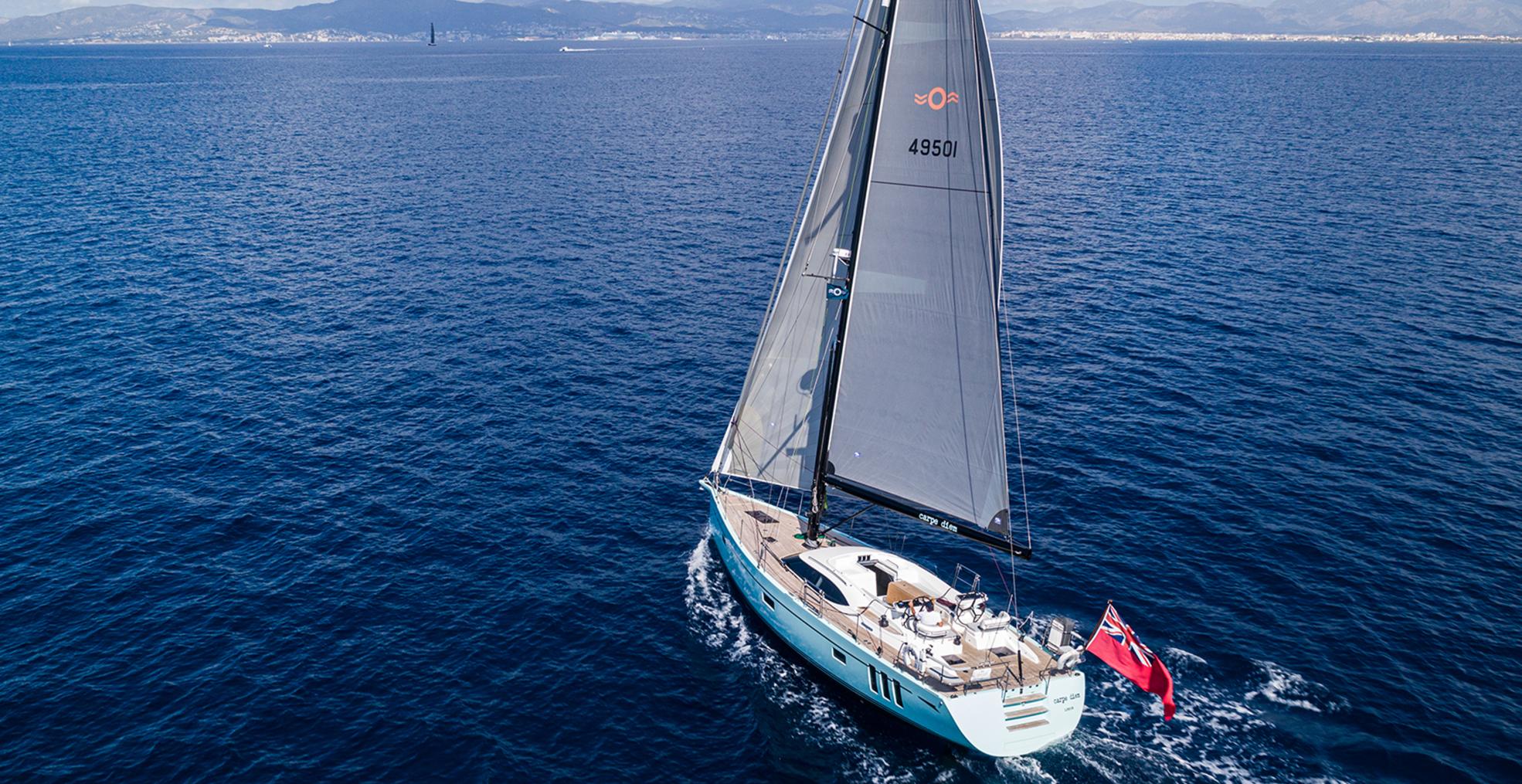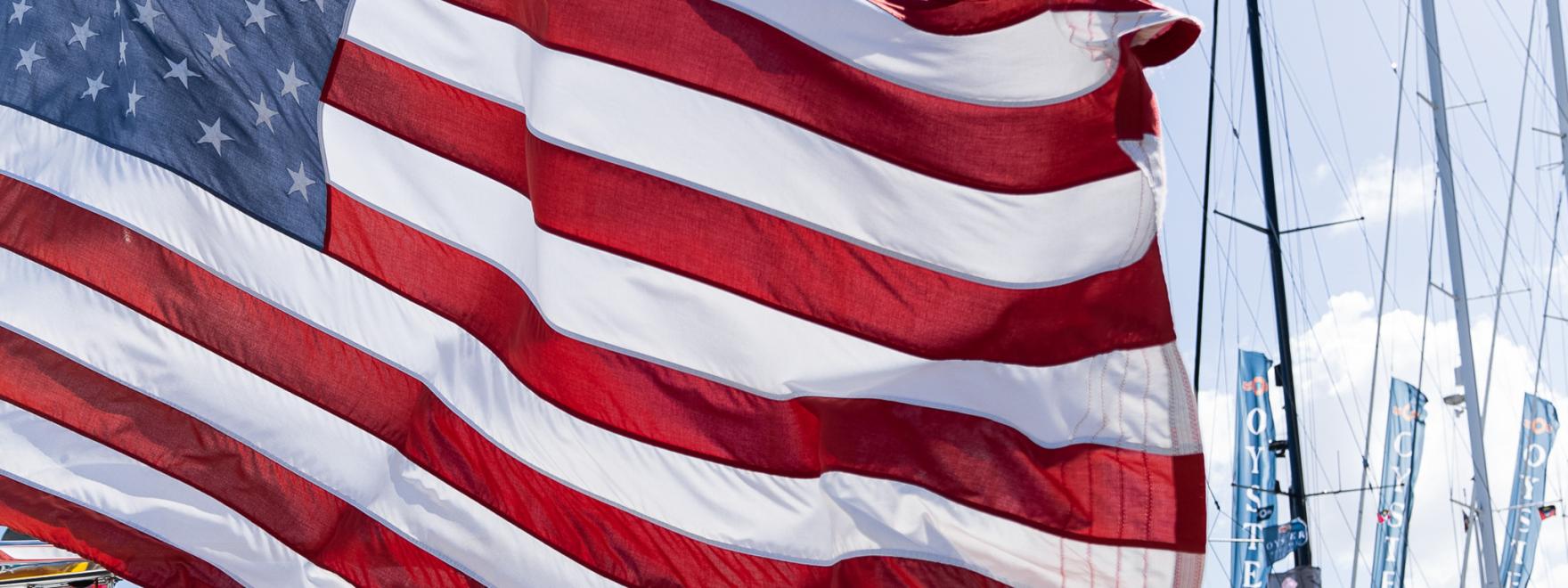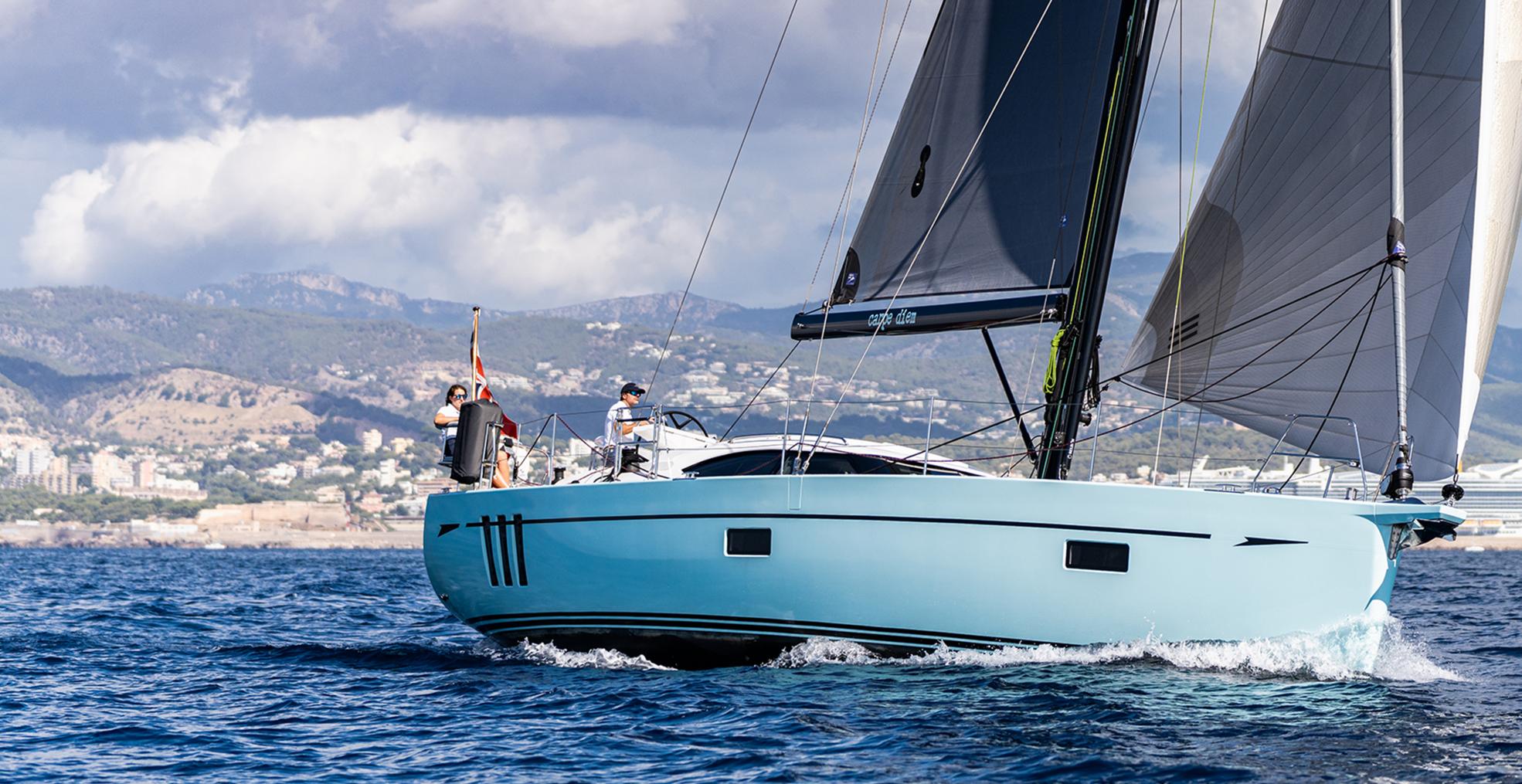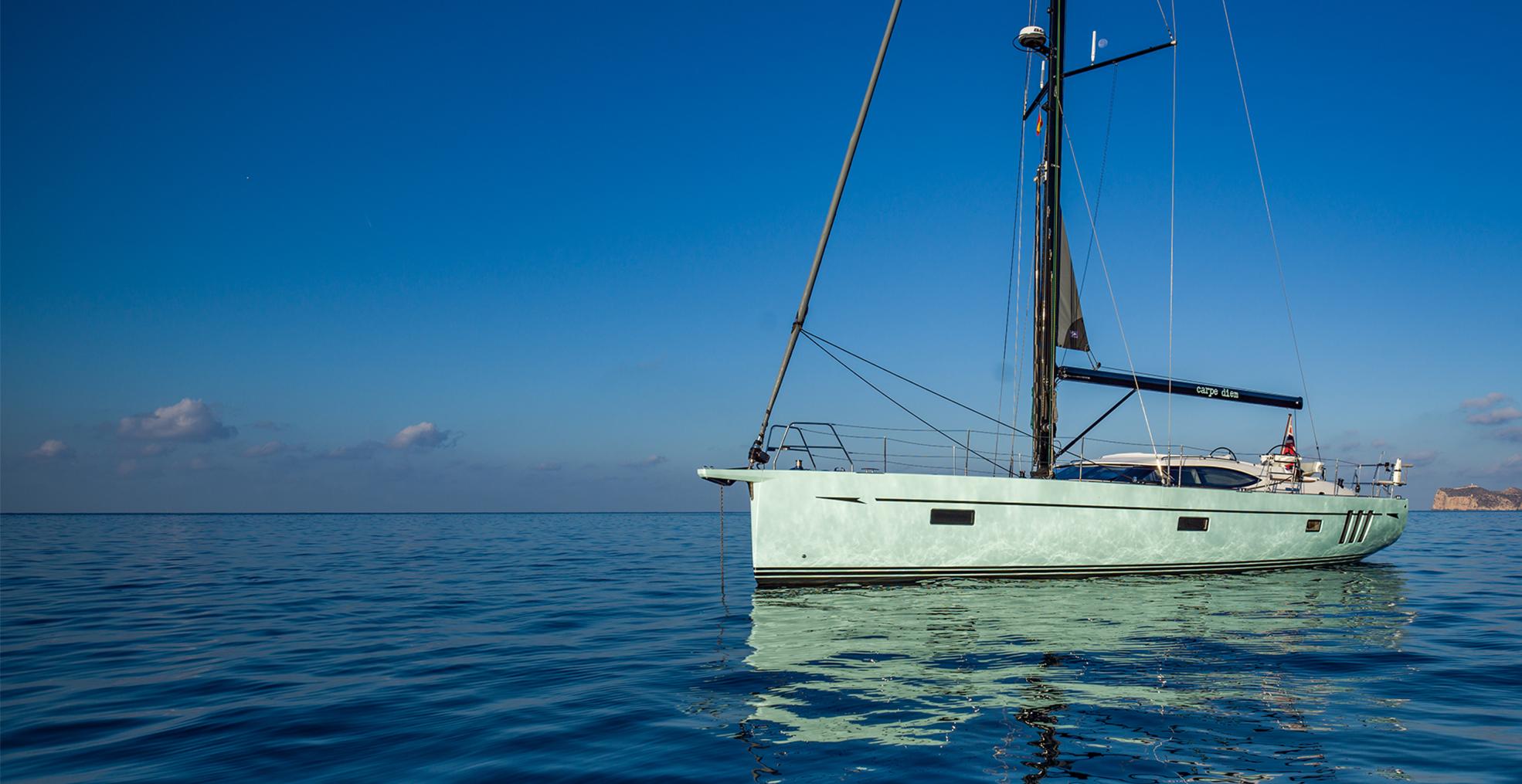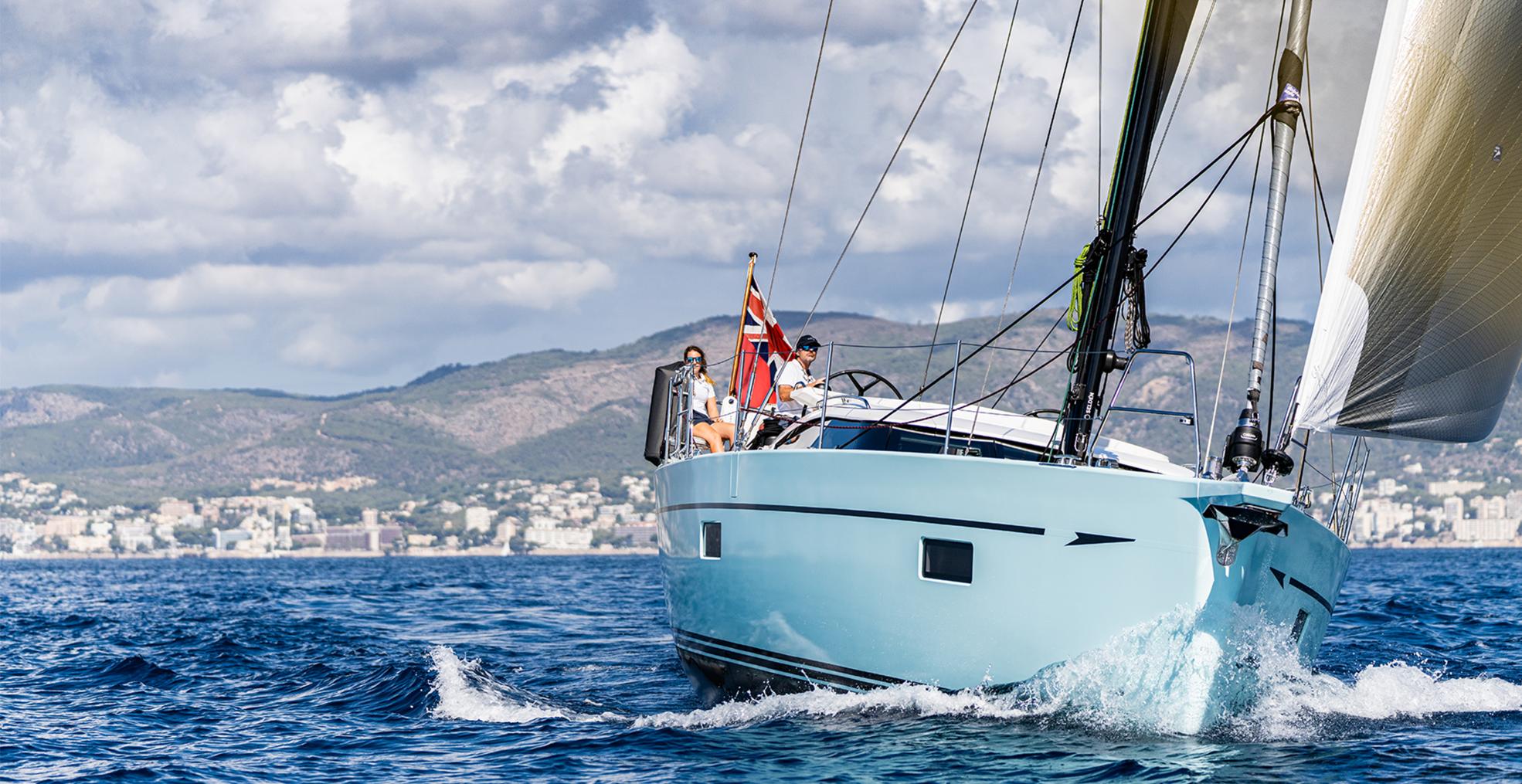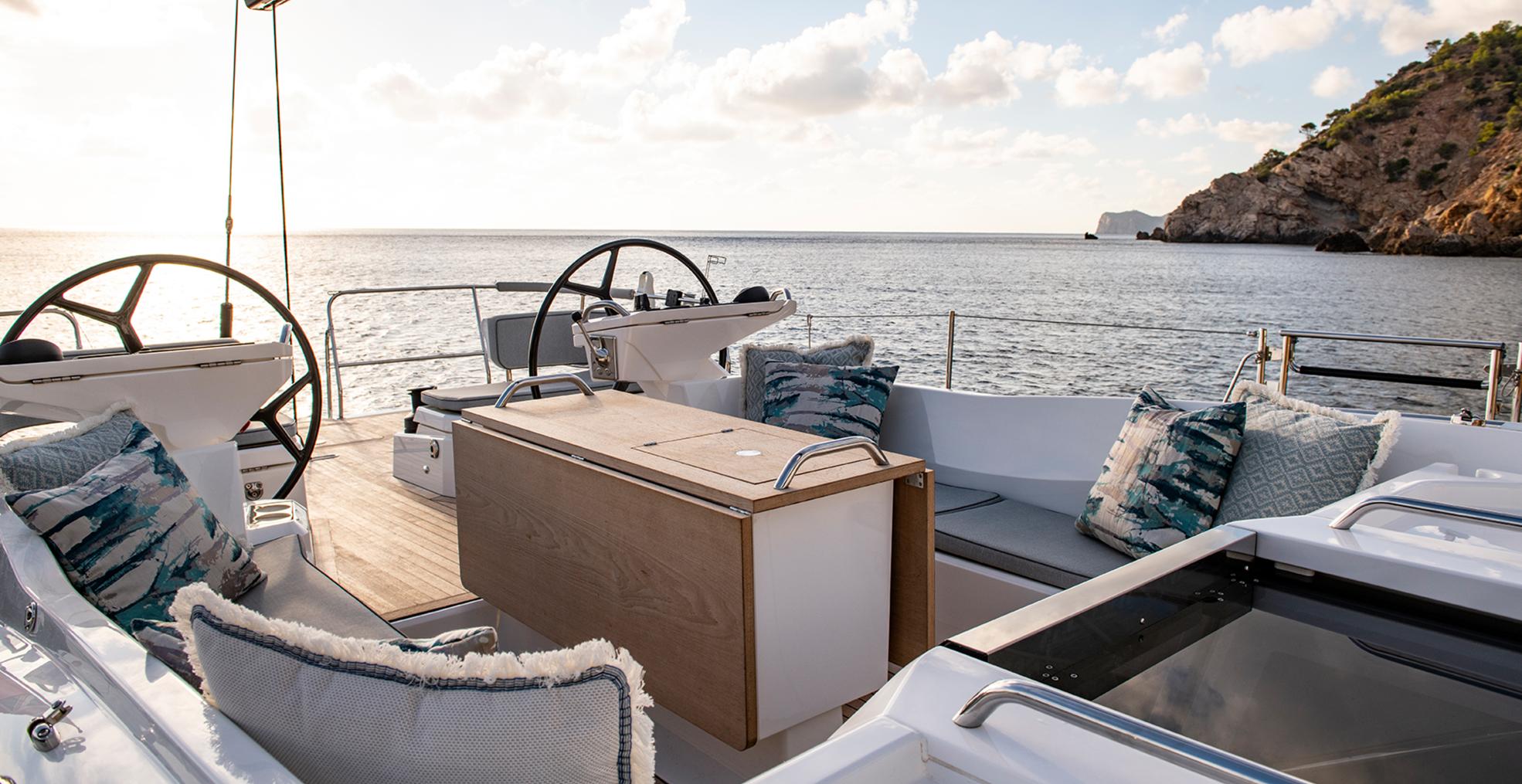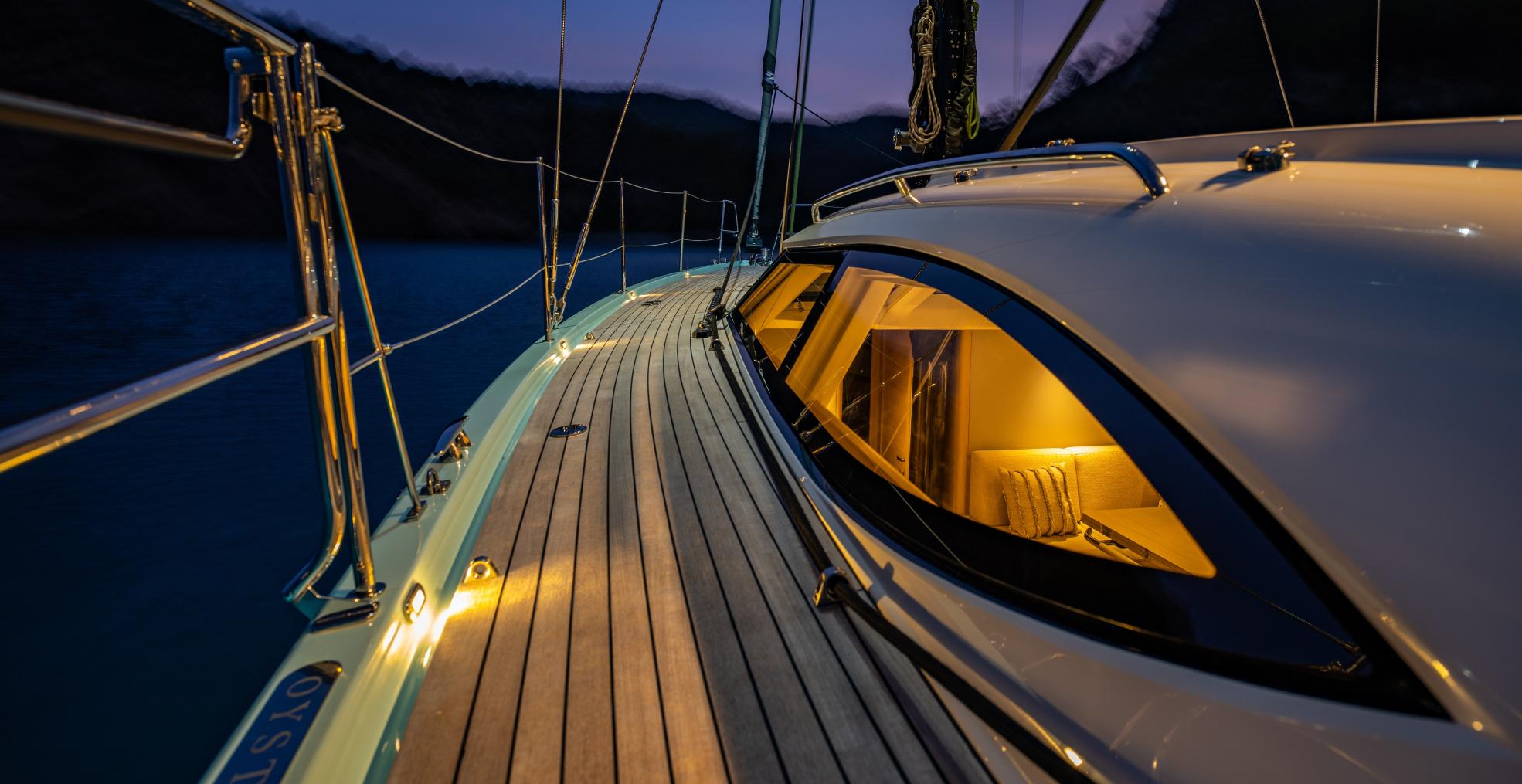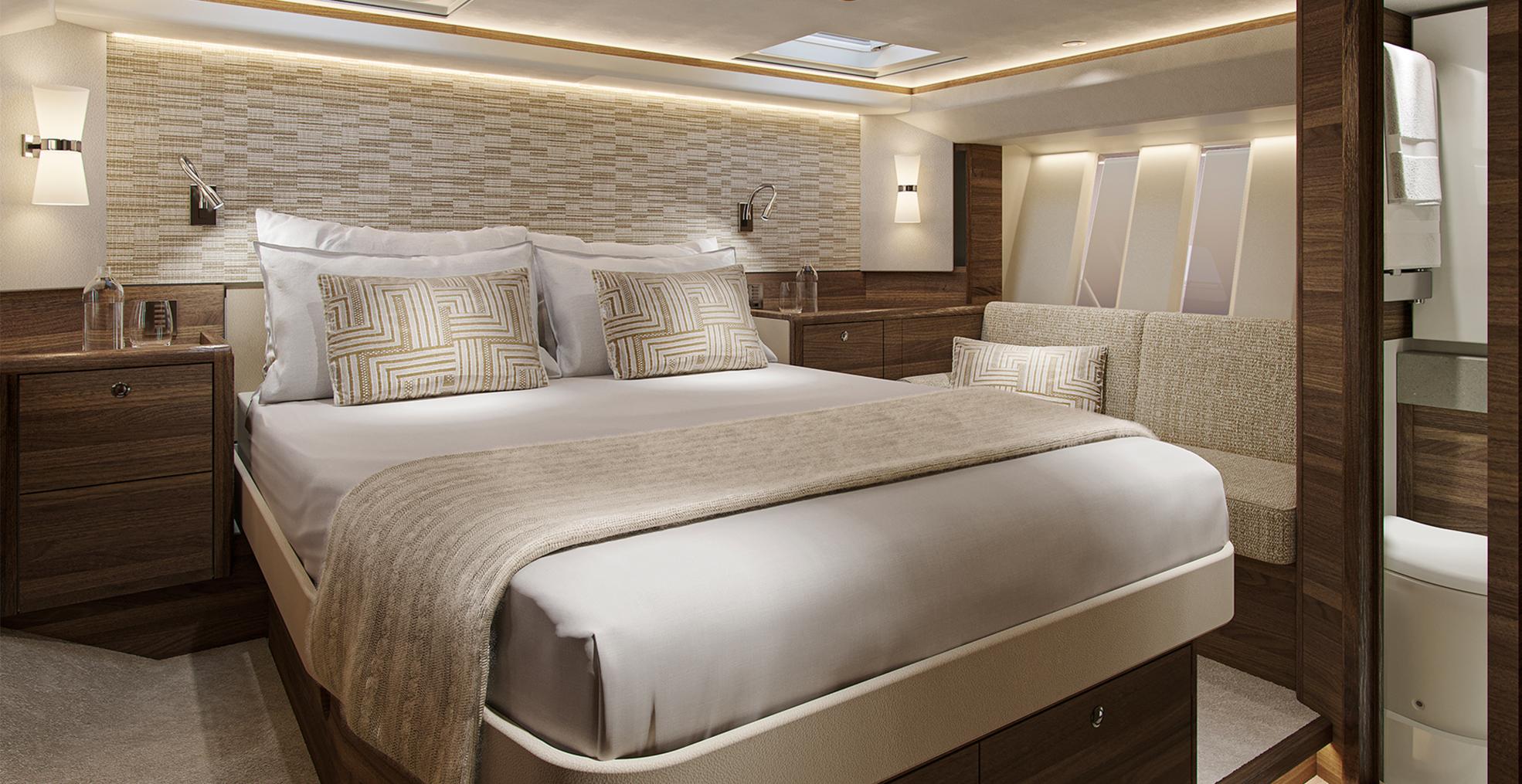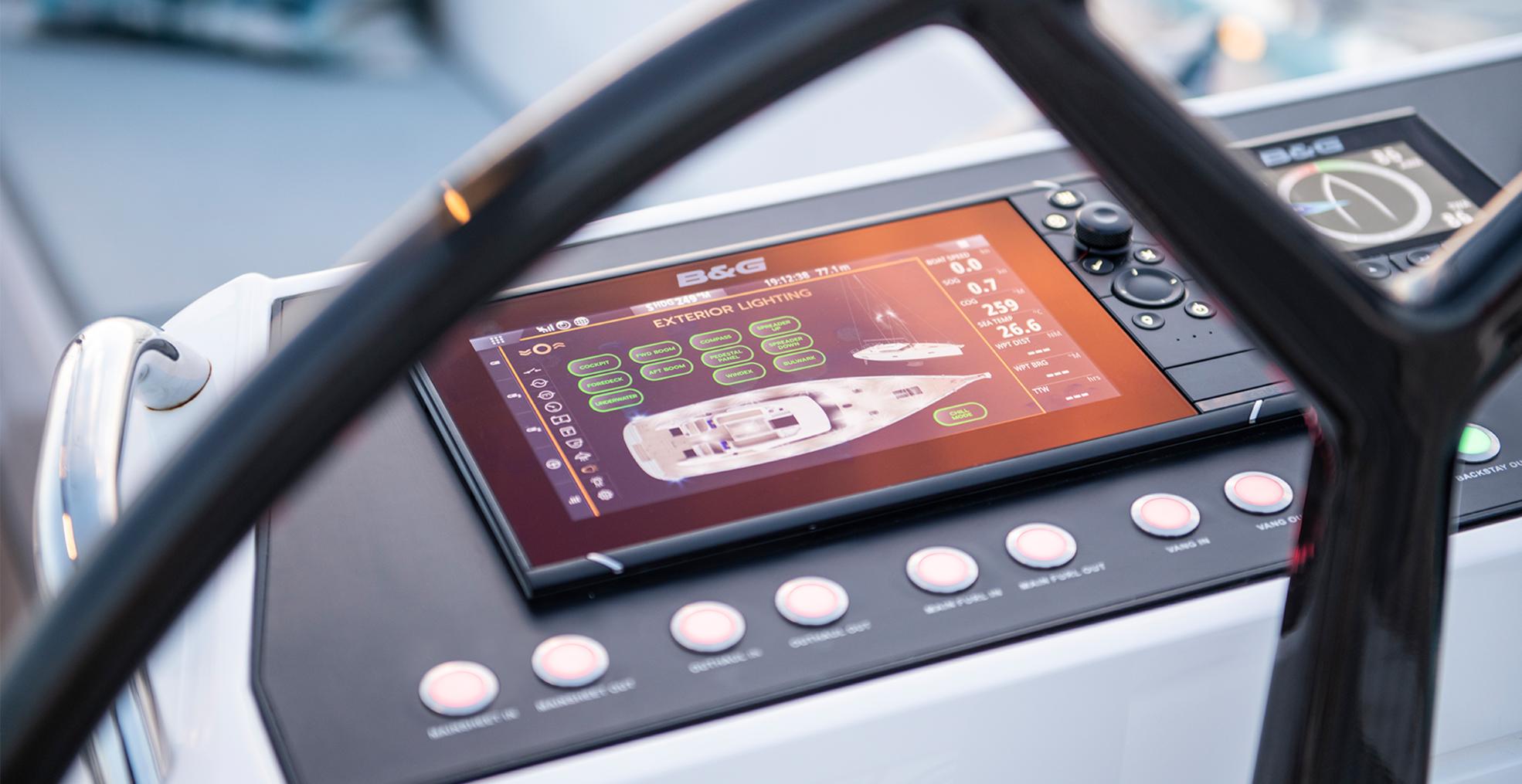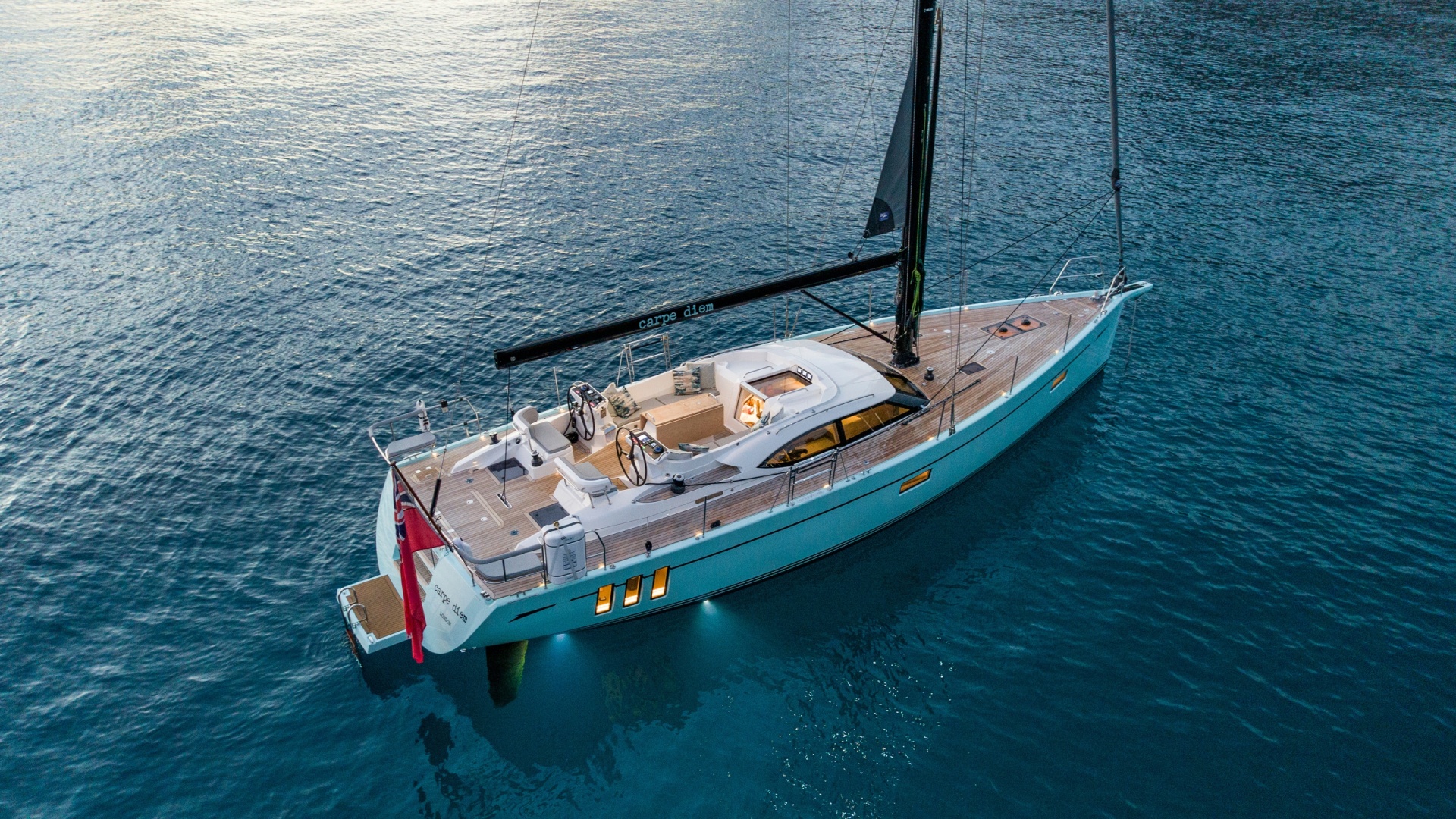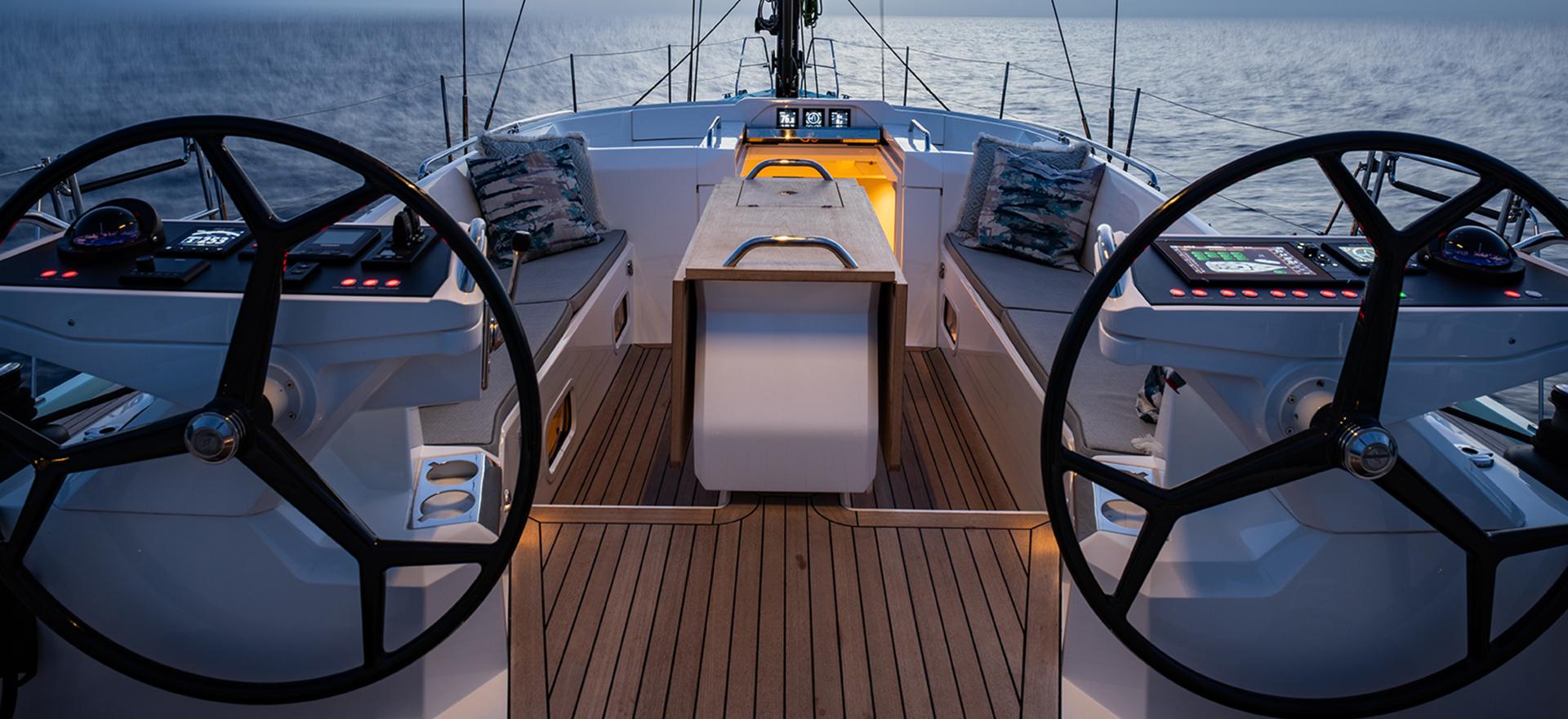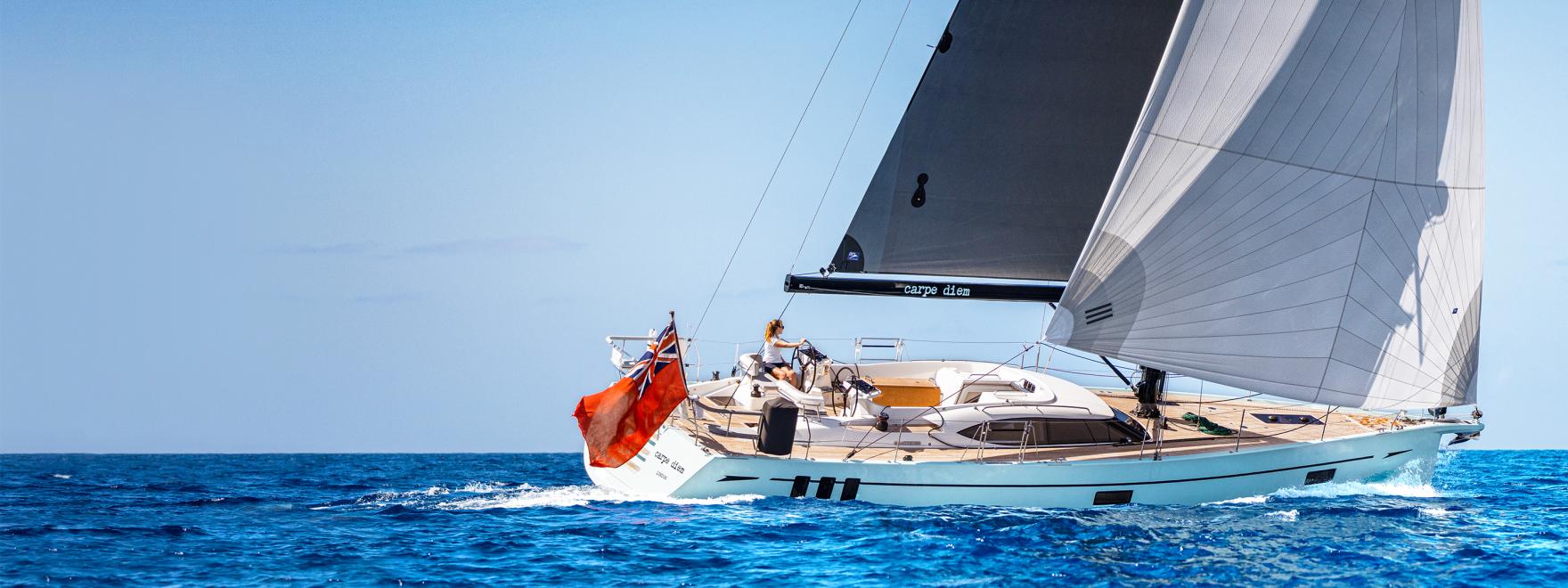Introducing the award-winning Oyster 495.
A luxury, bluewater cruiser with half a century of Oyster experience and innovation running through her every inch.
OYSTER USA
LOCAL EXPERTISE
For new yacht sales and our service operation in the Americas, visit our offices in the heart of the US East coast sailing scene, Newport, Rhode Island. We would be delighted to help.
QUICK LINKS
Displaying all the hallmarks of Oyster’s exquisite craftsmanship and meticulous attention to detail, the exceptional build quality of the Oyster 495 means she is built to last a lifetime.
OYSTER 495
BUILDING THE 495
Join double Olympic gold medallist, sailor and respected journalist, Shirley Robertson, as we build and sail the first Oyster 495.
Every inch an Oyster, the new Oyster 495 features instantly recognisable design cues – deck saloon, seascape windows and flush decks, combined with exceptional sailing performance.
Her clean hull lines and wide beam aft are the foundation for the outstanding space and capabilities of the Oyster 495. She incorporates many of our big yacht features in a compact 50 foot yacht. Instantly recognisable as an Oyster, the Oyster 495 features our pioneering deck saloon, protected cockpit and helm stations, wraparound and forward-opening saloon windows. Flush decks, signature triple vertical seascape windows, foredeck skyscape windows, a powerful plumb bow and extended bowsprit complete the look.
We were the first boat builder to create a truly ergonomically designed cockpit and helm positions, with sprayhood and optional bimini for additional protection. Details like the cockpit table, with optional built-in refrigerated drinks locker, that comfortably seats up to eight people, is just one of the many triumphs of Oyster design thinking.
Nine knots is her happy place and her well-balanced, stable wide-beamed hull form gives you confidence to keep the sails up in almost any conditions. Twin rudders make her light and agile on the helm, offering fingertip control even in the most boisterous seas. Her low centre of gravity keel offers substantial displacement for enhanced stability and handling, and she moves easily in cruising trim. Carrying significant sail power, you are guaranteed consistently fast cruising speeds and the optional sprayhood and bimini provide excellent protection from the sun, whilst improving all-round comfort.
This 50 foot sailboat for sale offers the range of innovative automated sailing technology. This includes in-mast furling with push-button controls and B&G instruments, all operated from the helm positions, making her the perfect choice for couples or young families.
Her wide beam offers unexpected returns in space, both above and below decks – something you will not find on any other 50 foot sailboat for sale. The beautifully styled centre cockpit is perfect for entertaining up to eight people for alfresco dining. The aft pushpit seats are a great place to see all the action under sail. The wide teak deck at the stern and flush foredeck offer generous entertaining and sunbathing spaces.
The transom houses an innovative, push-button operated, cassette boarding/bathing platform. A choice of subtle mood lighting and integrated audio speakers let you set the tone for entertaining guests under the stars.
New generation interiors feature modern styling, integrated technology and equipment for truly luxurious entertaining and living spaces.
With four interior designed themes, 495’s interiors set a new standard in her class. The well-equipped, seaworthy, u-shaped galley, saloon and cabins are well-proportioned, comfortable and luxurious. Her wide beam aft offers unexpected space compared to any other 50 foot yacht for sale.
She is eminently practical, making her perfect for liveaboard adventures. Intelligent interior space planning, combining insights and the acclaimed craftsmanship from our larger yachts, makes use of every inch of hull volume. The tasteful choice of materials, fabrics and integrated technology throughout, along with modern styling, creates truly luxurious entertaining and living spaces. The impressive owner’s cabin, with its deep luxury mattress, has excellent headroom and signature triple seascape windows, creating an amazing feeling of space and light throughout the new Oyster 495. Our new mood lighting system creates a perfect interior environment.
The learnings of half a century of designing and building bluewater cruisers feed into every detail, and the insights of our owners, skippers and crew, sailors and our own team help fine-tune every aspect of the design and build. The result is a unique combination of design, technology, engineering and hand-crafted build quality. Beautiful hardwoods run throughout every inch of this exquisite 50 foot sailboat, in everything from hand-built furniture to intuitively placed grab rails. This focus on detail reveals itself in the beautiful, hand-crafted cabinetry and the easily accessible, carefully labelled cables and pipework that run behind the scenes to make maintenance tasks simple.
Not only does it make her an ideal liveaboard yacht, but it also makes her a work-aboard yacht. Every system is chosen for its ruggedness and fitness for purpose. The chart table is a technology hub, featuring an optional, innovative, foldout, integrated PC; lift-top desk; plotter; VHF and SSB radios; power management; generator control; switchboard; and plenty of power sockets. Oyster’s proprietary digital switching system – Oyster Command™ – lets you monitor and control various systems over a digital network and touchscreen. Optional WIFI can be accessed through the latest satellite technology, or 4G/5G cellular antenna when close to onshore radio masts. Entertainment systems are seamlessly integrated, with a concealed saloon TV and audio running throughout the boat.
Discover the 495 in detail.
QUICK LINKS
TECHNICAL DETAILS
| LENGTH OVERALL | 16.1m / 52’8” |
| LENGTH OF HULL | 15.15m / 49’7” |
| LENGTH OF WATERLINE | 14.27m / 46’8” |
| BEAM | 4.77m / 15’8” |
| DRAFT - STANDARD KEEL | 2.28m / 7’5” |
| DRAFT - OPTIONAL SHOAL KEEL | 1.83m / 6’0” |
| DISPLACEMENT (LIGHTSHIP) | 21,000 kg / 46,297 lbs |
| ENGINE | Yanmar 4JH110 |
| TANKS - FUEL | 800 litres / 211 US galls |
| TANKS - WATER | 600 litres / 159 US galls |
| OVERALL SAIL AREA (IN-MAST FURLING) | 120.00m2 / 1291ft2 |
| OVERALL SAIL AREA (FULLY BATTENED MAINSAIL) | 127.57m2 / 1373ft2 |
| AIR DRAFT APPROX, EXCLUDING ANTENNAE | 23.14m / 75’6’’ |
The in-mast furling system takes automation and effortless shorthanded sailing to another level.
Push-button control with electric Lewmar winches in sleek, black anodised finish.
The innovative, automated cassette bathing platform is ideal to access ocean swimming, boarding a dinghy or stern access when berthed. It features a sturdy boarding ladder and integrated freshwater shower on the transom steps.
The standard B&G navigation system displays boat speed, wind and depth information.
An impressive full width owner’s cabin is completed by Oyster’s signature triple Seascape windows. These create a feeling of light and space, with exceptional ocean views.
Choose from a selection of wood themed interiors, including shades of sustainable sourced oak and walnut.
A full width lazarette and separate sail locker provide ample storage for all your bluewater adventure kit, sails, rigging and mooring gear.
With a beautiful fine grain teak finish, the sustainable synthetic Flexiteak deck is 30% lighter than traditional teak, extremely hard wearing and retains it look with minimal maintenance.
Oyster’s unique, deck saloon forward opening windows provide excellent ventilation, allowing fresh air to circulate freely through the yacht while at anchor or under sail.
The build plan of the Oyster 495 hull is certified by DNV GL to ensure the materials and construction reach the highest standards of extreme strength and durability.
Take advantage of shallow-draft cruising grounds and remote anchorages, with a draft of 1.83m / 6’0”.
Sleipner Side-Power retractable bow and stern thrusters make it simple and safe to manoeuvre in and out of tight marina berths.
Choose from an optional range of integrated electronic and AV systems to suit your personal preferences.
The multifunction saloon table can be raised and lowered to create a comfortable day bed, perfect to relax on and enjoy the integrated widescreen TV.
Personalise your Oyster 495 with alternative coloured hull, mast and sails. See our colour picker for inspiration.
Keep the interior at the perfect temperature with air conditioning (and generator) that cools and heats. Controls in each cabin allow guests to adjust the temperature based on their personal requirements.
Upgrade the standard B&G navigation package with the additional instrumentation, communication equipment and autopilot package.
Extensive sustainably sourced, quarter-sawn, full-depth teak ensures maximum longevity and lifespan of our hand-laid teak decks. Smooth and natural underfoot, they look stunning.
For the best seats aboard, the optional pushpit seats provide great views and the perfect spot for sundowners after a memorable day’s cruising.
Enjoy 100 litres of fresh, homemade water per hour with a reliable Dessalator Duo watermaker with automatic controls and manual override.
Add davits to the stern deck for a practical dingy stowage solution when cruising and fast, efficient access when exploring at your destination.
PRICE
DELIVERY
IN DETAIL
HIGHLIGHTS
GALLERY
QUICK LINKS
The Oyster Fleet
